WONDERFUL WILDLIFE
Here is the latest posting from Helen Bovill of her series ‘Wonderful Wildlife’.
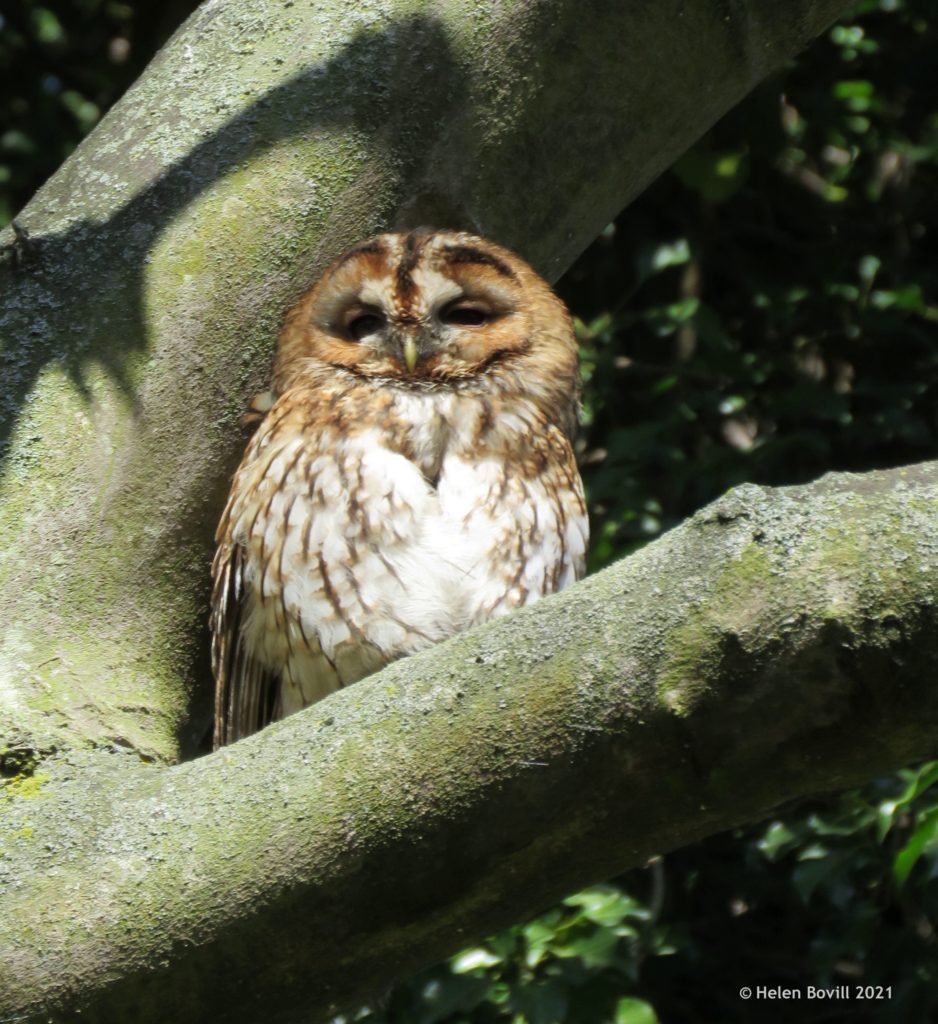
April 2021
A rather cold month with several days starting at sub-zero temperatures. Despite the well-known saying about ‘’April showers’’ it was a very dry month with no significant rainfall. There was still plenty of warm sunshine though and the cemetery is teeming with wonderful wildlife.
Birds
This month’s star bird of prey is the Tawny Owl (pictured above). It was first photographed by a visitor to the site in late April and I was lucky to see it myself a few days later. This stunning bird is slightly smaller than a Wood Pigeon. Also seen was a Sparrowhawk but the Buzzard hasn’t been seen recently. However there have been reports of two of them flying around the adjoining Western cemetery.
I also saw a Redwing earlier in the month. It might have just been passing through but it landed in one of the cemetery’s trees so it counts!

The air is full of birdsong and the many Robins and Wrens provide some of the most beautiful woodland sounds. Another bird with a fine voice is the Blackcap. The birds’ singing reaches a peak in early May. This is why International Dawn Chorus Day takes place on the first Sunday in May. Why not get up early and have a listen?
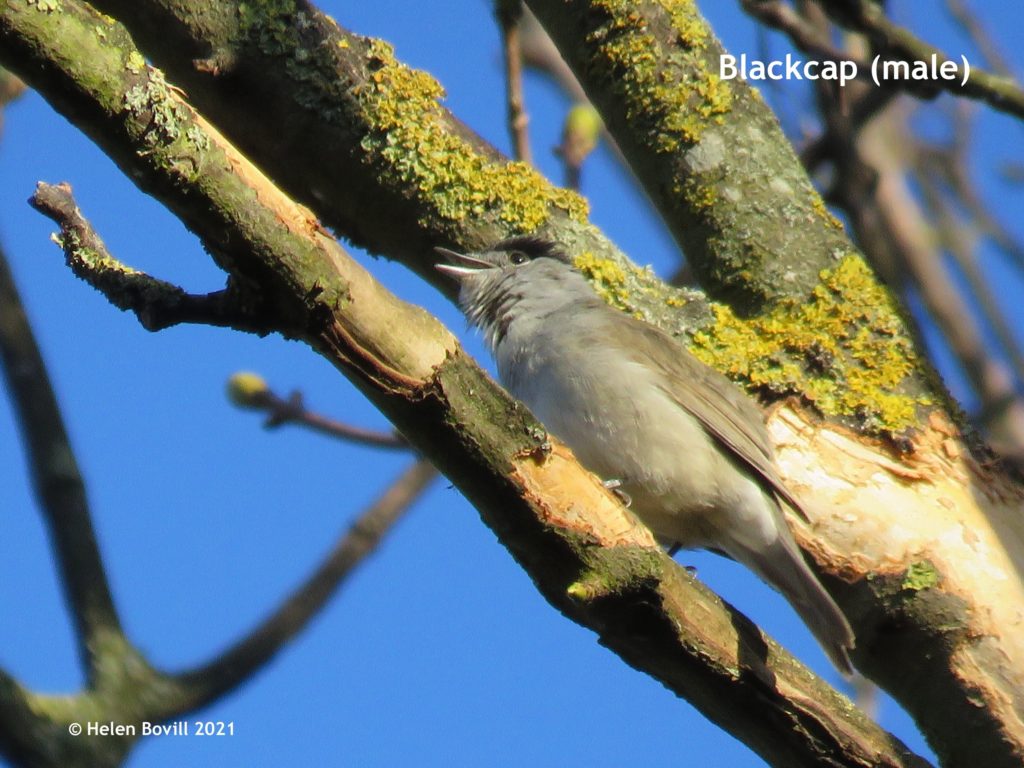
But it wouldn’t be Spring without the very distinctive sound of the Chiffchaff coming from high up in the trees.
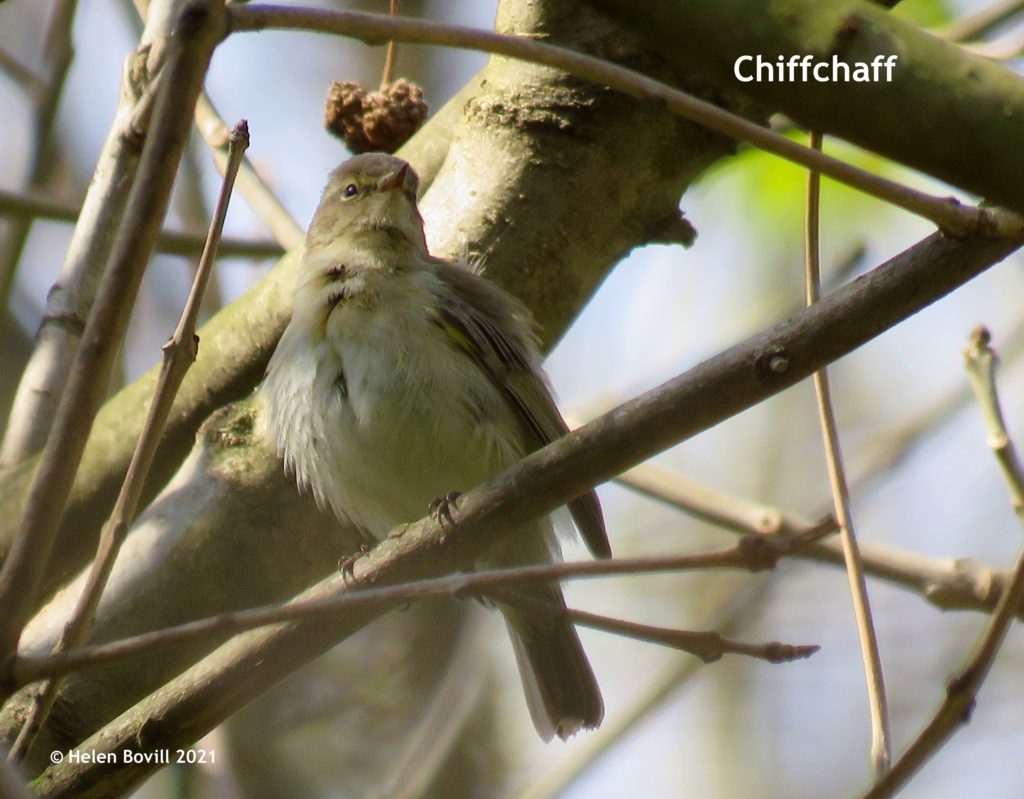
There are a number of Blue Tits in the cemetery and some are making good use of the nest boxes. Blackbirds, Great Tits, Blue Tits and Coal Tits are gathering nesting material (other birds’ feathers seem to be quite popular). Small groups of Long-tailed Tits can be seen darting from tree to tree and there are Chaffinches, Goldfinches, Goldcrests, Dunnocks and Treecreepers living in the cemetery as well.
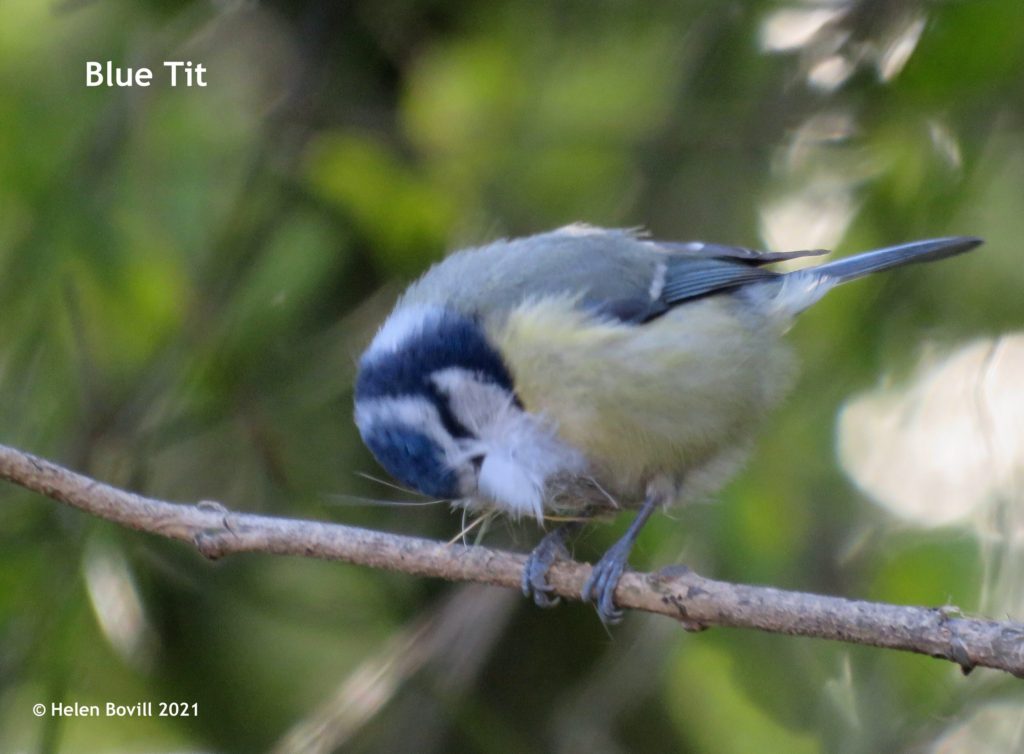
Butterflies and other insects
Peacocks, Small Tortoiseshells and Commas continued to be seen. Brimstones, Orange-tips, Speckled Woods, Small Whites and Green-veined Whites also started to emerge. All have been seen inside the cemetery but the easiest place to see them is on the grass verge running alongside the cemetery on Spring Bank West.
Brimstones always rest with their wings closed and are a bright shade of lemon-yellow. The females are much paler, almost white. This is another butterfly that overwinters as an adult.
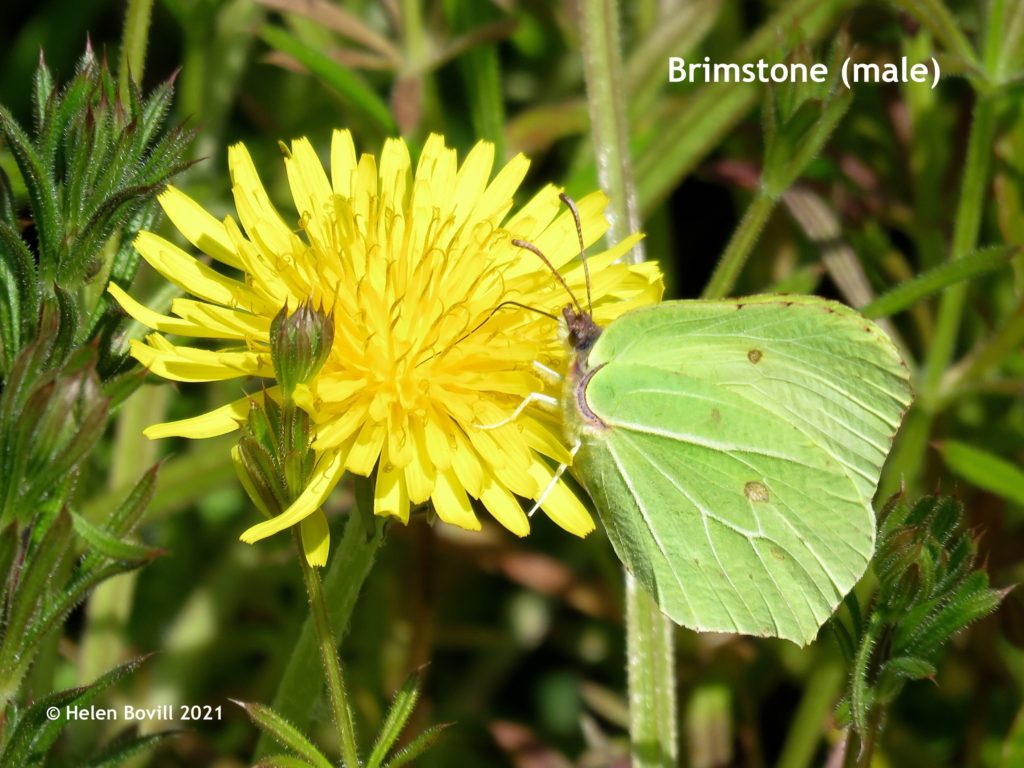
Orange-tips started to emerge towards the end of April. These rest with their wings open as well as closed. The female lacks the orange markings. They overwinter as a pupa so this one is brand new. The markings on the underwings are actually made up of yellow and black scales – it’s just the light that makes them look green.
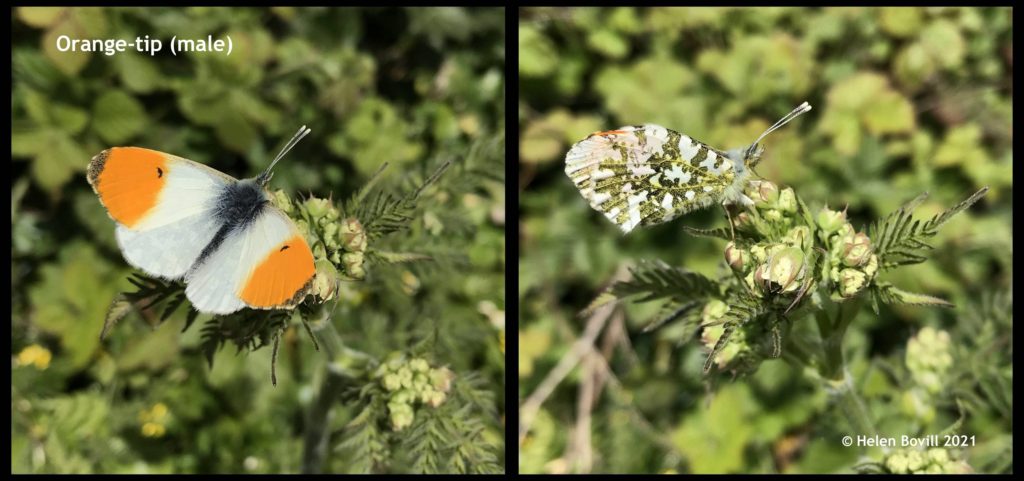
Speckled Woods started to emerge towards the end of April too. They are the only UK butterfly that can overwinter as a pupa or as a later stage larva. Male and female markings have no obvious differences.

Hoverflies, Bees and other insects are now in abundance. Several mounds looking like miniature molehills have started to appear on the ground. These mark the entrances to the underground nests of Tawny Mining Bees.

Flowers
Celandines were abundant along the Spring Bank West verge up to mid-April. Dandelions are now in abundance there, together with Daisies and other wildflowers. These include Cuckooflower, an important plant for all life stages of the Orange-tip butterfly.

Another important plant for Orange-tips is Garlic Mustard and this is now starting to flower. This seems to be its best year yet.
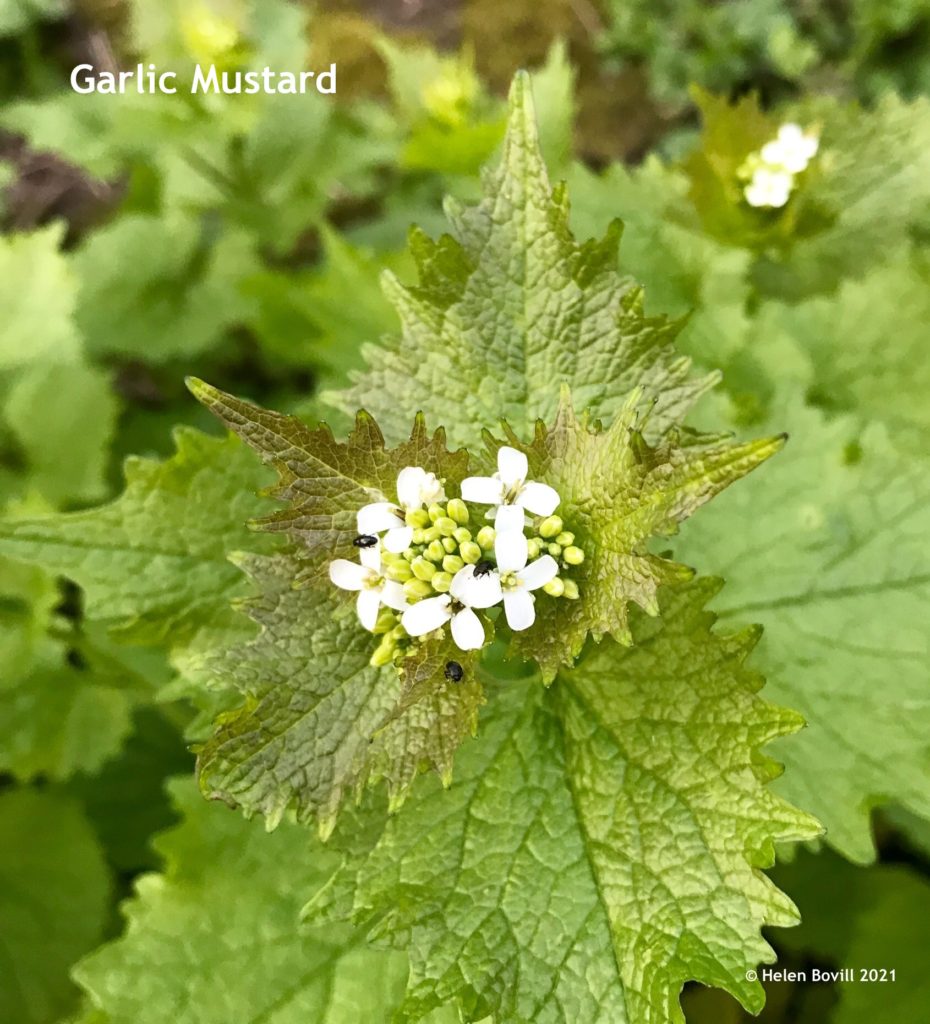
The Celandines are now in full flower inside the cemetery and clusters of them can be seen just about everywhere. Other spring plants are now in flower including Periwinkle, Red Dead-nettle, Groundsel, Common Chickweed, Common Dog-violet and Yellow Archangel.
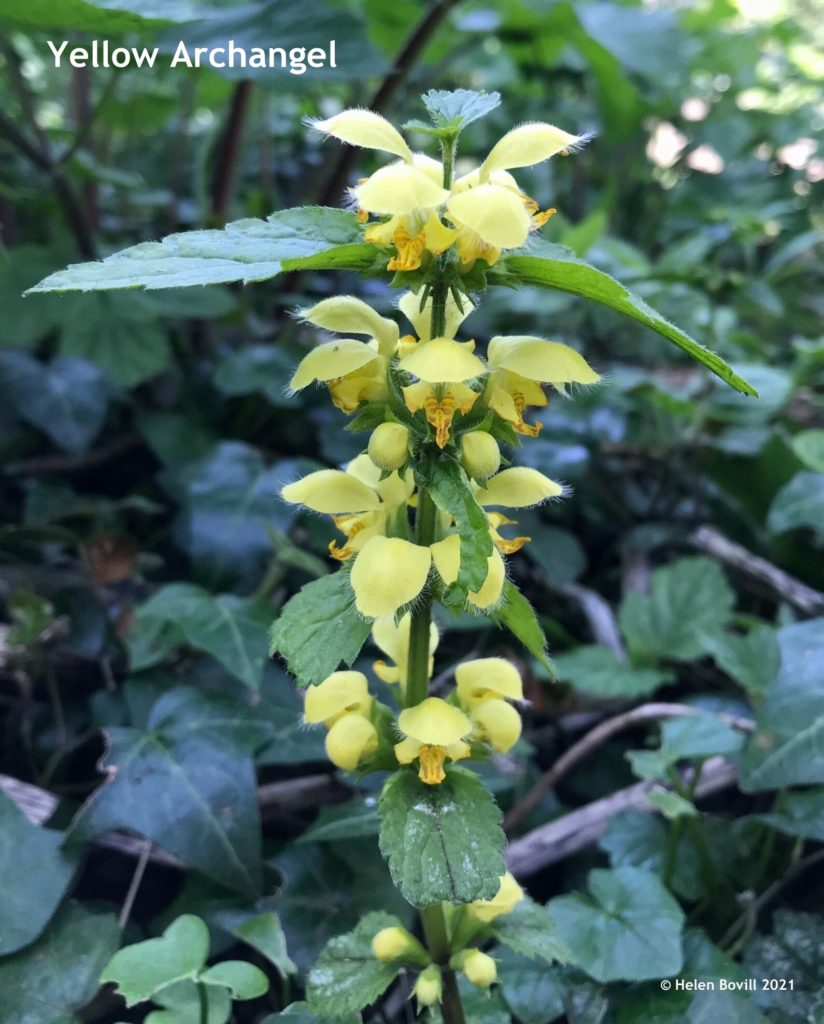
April has been a great month for the cemetery’s wonderful wildlife and the ground is carpeted with greenery in most places. Last month’s small green shoots are turning into fully-fledged leaves. Cow Parsley and Bluebells are also starting to flower. May will be their peak month so I’ll talk about those in the next newsletter.

Pete Lowden is a member of the Friends of Hull General Cemetery committee which is committed to reclaiming the cemetery and returning it back to a community resource.

When Helen sent me this I was amazed at the Tawny Mining Bees. I’ve been going in HGC for more years than I like to say but I have never, ever noticed these. What a fascinating find. I really should look more at the ground rather than the stars and I’d notice more. I’d also avoid the dog mess more but that’s another story. Thanks again Helen.
Wonderful section on nature in all its forms, learn so much and have found out I know every little when I thought I knew a lot!
Thank you so much Helen this cemetery is much more than just who is buried there. And they all complement each other in my view.